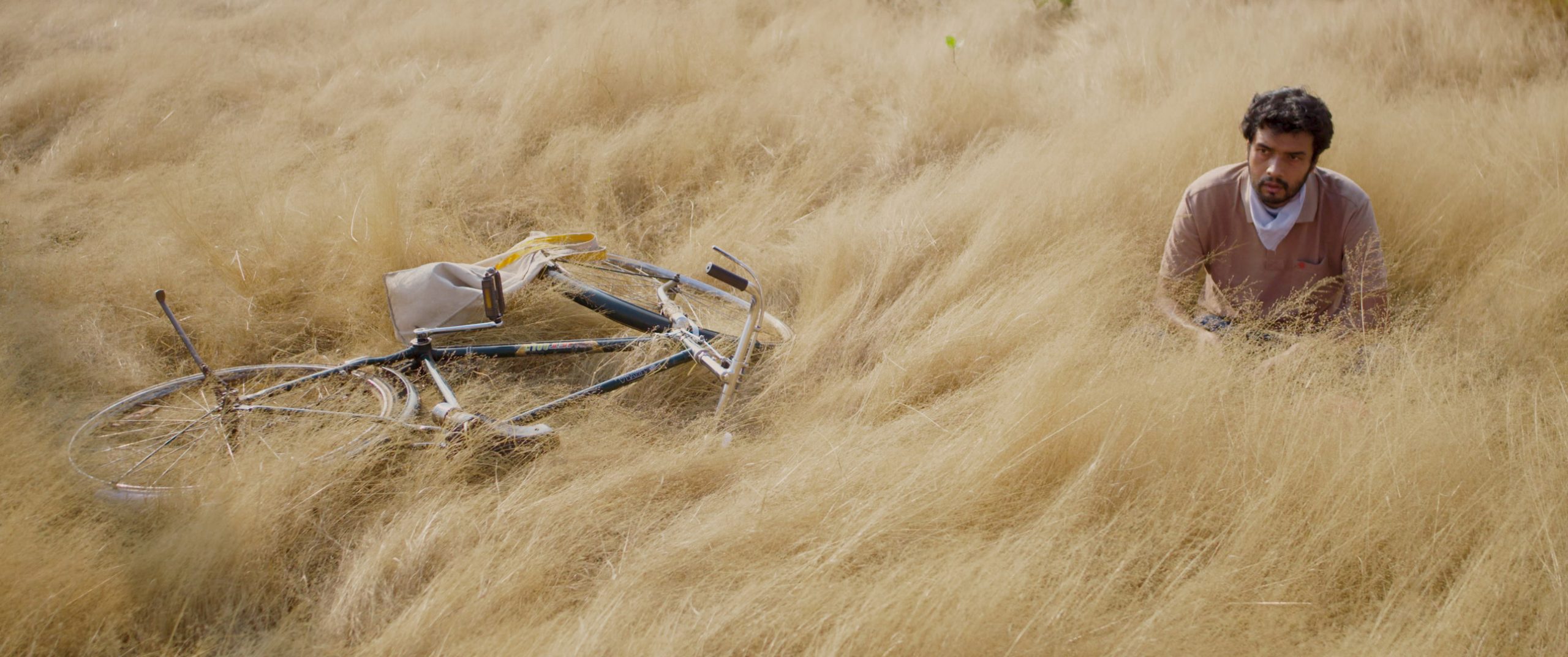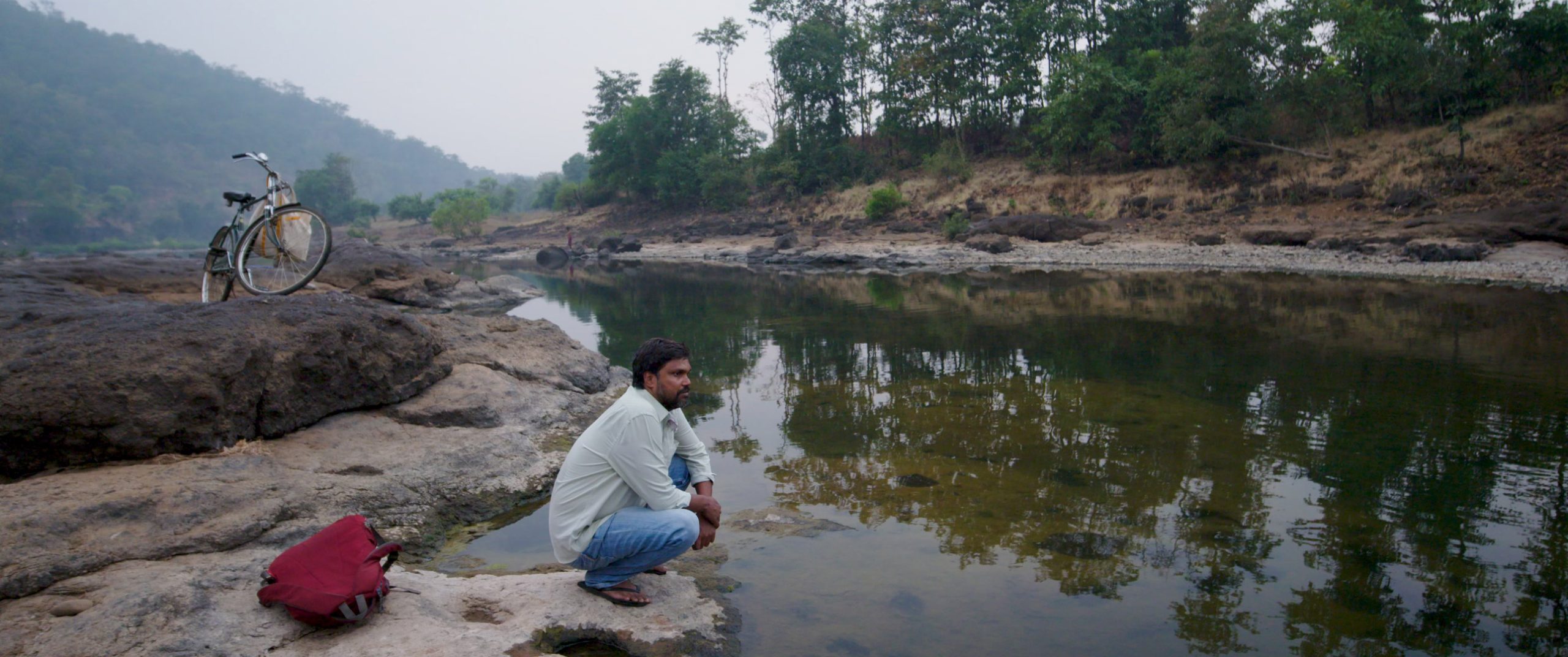감독 수헬 바네르지 Suhel BANERJEE | India | 2024 | 61min | Experimental | 국제경쟁 International Competition
The starting point for the film is intriguing. What was the most cinematically interesting part of Mahesh’s true story? Was there a motive behind your decision to make a film about Mahesh after first finding out about him?
The ‘travelogue’ has historically held tantalising possibilities for storytellers – think Odyssey or Motorcycle Diaries (2004). When I first read about Mahesh’s journey, I was struck by how lonely he must have been and how crazy the experience. When I started talking to him however, I realised that this extraordinary journey did not have any impact on his material conditions. And that no matter how long he travelled, he was condemned to return to the beginning of the journey – to a place he needed to escape from yet again. Think Sisyphus. So in a way, this conflict, of an onward journey that is cyclical, is the film’s starting point.
The film has a unique format combining documentary and fiction. In the process, Mahesh comes across as more of an ascetic (seeker) than an “amazing story subject” or a “person of the hour.” Why did you choose to portray his journey the way you did in the film rather than simply retell it?
To simply retell a complex story like that of Mahesh would be to reduce it to only one aspect of it. In any case, there is no simple ‘retelling’ of any story. Yes, he made a journey home, But that journey was an extraordinary one. And so what does a journey like that do to a man? In many ways a long journey is like living many lifetimes in one. To me, this commonality between a physical journey and living a life is always fascinating. It gives an opportunity to see more, say more. That he comes across as a ‘seeker’ is also a reflection of how I look at people. What is it that we seek? Freedom? This is what the film’s characterisation of Mahesh tries to explore.
The fourth wall is often broken in the film. For instance, crew members step into the frame during filming, and there is an altercation with the police. What is the significance of this stylistic choice that blurs the line between reality and cinema, and what kind of experience did you want to offer the audience?
As an artist, living in times when there is an explosion in images all around us – images that can be manipulated and used as propaganda, we have to find a new way to tell old stories. Now we have 130 years of cinema behind us – vérité cannot anymore be about a day on the streets of a city! On the other hand, streaming’s (or mainstream cinema’s) enforced grammar of dramatic music, shallow depth of field and over-the-shoulder dialogue is not just lazy but also in many ways an obfuscation. It can even make the social life of geese look interesting. So the question is – without exploring form, how does one explore content? I would like to think that the form of CycleMahesh does not give the audience the escape of catharsis, of breathing easy, of imagining themselves as having done enough by the act of simply watching a film – in short, of alienating them. This film cannot be watched over a meal with a ‘second screen’ in hand. Some audiences call it anti-cinema. I am happy with that characterisation.
You used three different actors to portray Mahesh’s character, including Mahesh himself. What cinematic effect was intended by this choice?
Some creative decisions were taken in the spirit of experimentation. To explain it further would mean turning into a critic. And so one can say that the various actors in the film playing the same character show that the character, stuck in the cycle of disappointments is interchangeable – that there are and will be many Maheshes. Another way to look at it is that Mahesh grows older as he reaches home. Ultimately, like the surrealists, I am provoking the audience. I want them to make what they will of the fact that the actor changes midway, and not just once but several times. All interpretations are correct.
While filming the movie, Mahesh relives his past in front of the camera. In a way, he is given the opportunity to reenact, observe, reflect on, and interpret his own history. Did you notice any changes in his reactions or attitude throughout this process?
Anyone who takes part in a creative process changes. People who act, sing, make films, participate in filmmaking change – and in ways that are unpredictable. I cannot say for sure how Mahesh changed – that is for him to answer. But I can say that having seen himself through the film and having participated in filming – a nebulous and fun process, he sees himself differently, perhaps having more options, having more possibilities.
Despite the simple setting of a bicycle trip, the film is very poetically cinematic in its use of landscapes and light. Khanderao even adds a mythical atmosphere to it. What were the most important visual themes for you as a director, and how did you decide on the film’s cinematographic style and techniques?
The film was shot in Palghar , a tribal dominated region just outside Mumbai. Here, barely a hundred kilometers away from South Mumbai – India’s richest neighbourhood – live some of its poorest people. This extreme poverty is enveloped in a wilderness that is heartbreakingly beautiful. This landscape gave rise to the images that you see in the film. In this landscape wanders Khanderao, a minor God – not the know it all supreme being – but a minor divinity. He sees all and remembers all. Anyone who encounters him – and has an open mind – benefits from his wisdom.
For the benefit of non-believers, it can be said that we have borrowed Khanderao from a theatrical folk-form called Bohada that is ‘played’ during the festival of Holi in a place called Mokhada in Palghar.
In many, many ways, the film is as much about Palghar as it is about Mahesh.
Music is a crucial element that sets the atmosphere of the film. How did you approach the composition of the music and sound design? What elements did you consider to evoke specific emotions?
One of the ways in which we tried to show the inner world of Mahesh is by using a single male voice. We used Dhrupad – a meditative and ancient form of Indian classical music and throat singing – a more primordial sound that seems to come from an inner agony. Both are sung by Vishesh Kalimero, an extraordinarily original Indian musician. Then there is music that creates drama – in motifs that are more dramatic and cinema-like. This is also the music that we interrupt most often – to interrupt the ‘made-up’ drama of the moment. Similarly, sound is used to create the landscape – both internal and external – of the traveller as he cycles across India. Bigyna, who did the sound, brought a new dimension to the film with his expertise. I am thankful to both (and to Rahul Jigyasu who plays Pakhawaj and a Javan bamboo flute in the film).
Mahesh’s journey also reflects the struggles faced by millions of migrant workers during the pandemic. What social discussions or questions do you hope to inspire or raise through this film?
I don’t know if films inspire widespread social discussions – that’s too much responsibility on its meagre shoulders. But it is a private conversation between a filmmaker and the person watching it. Sometimes that conversation is about a worker, sometimes about music and sometimes about cinema and always about our shared experience as human beings. In that way perhaps, films – like all art, changes the world, albeit one person at a time.









